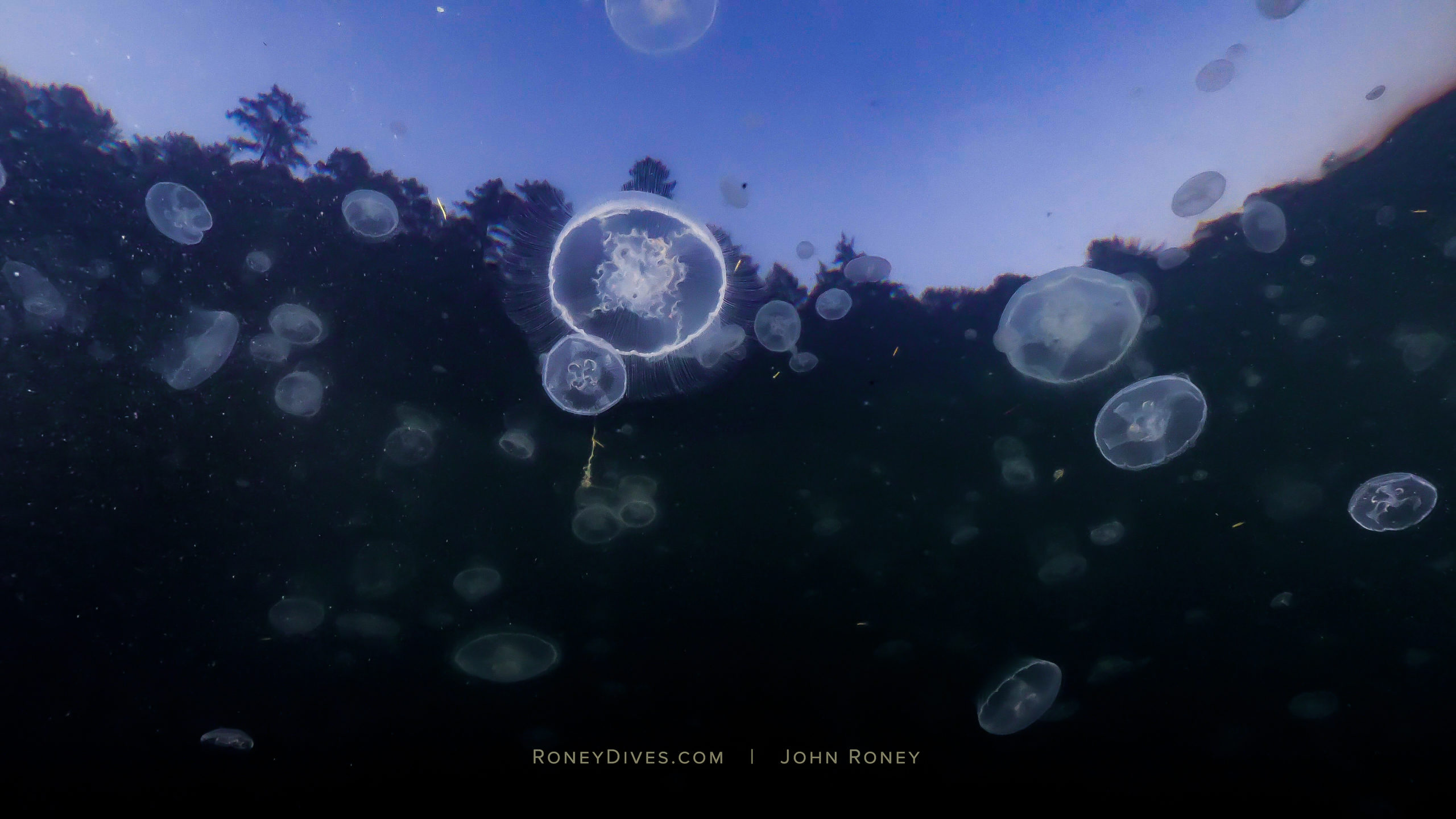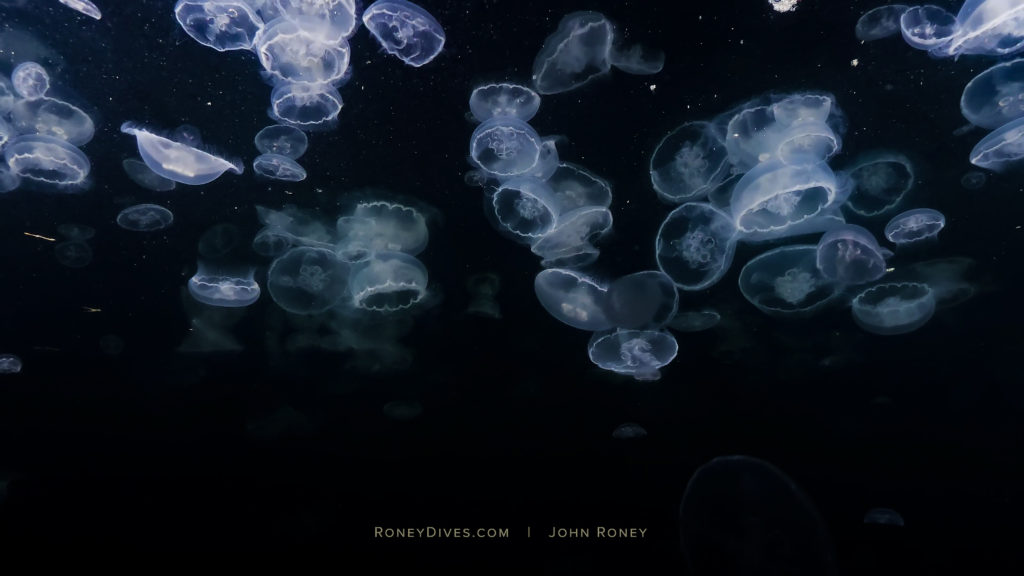Posted: Oct. 18, 2022
Vancouver Island cinematographer John Roney got an up-close look at a moon jelly bloom near Brentwood Bay in September 2022. The sea jellies are often found in shallow pelagic areas of coastal waters near bays and harbours.
A Vancouver Island cinematographer took a deep dive into the waters off Brentwood Bay to get an up-close look at a massive moon jelly bloom, capturing the marine species on video for all to see.
John Roney, a Parksville resident, submerged himself in Todd Inlet to capture the visually spectacular phenomenon.
“When you’re down there, it feels like you’re on another planet. It’s really fascinating,” Roney told CHEK News.
“There are jellyfish touching every part of your body and you’re navigating your way through,” he recalled. “But then it also ties to the warming temperatures on the planet, so there are some interesting messages as well as beautiful visuals.”
Roney’s nighttime underwater exploration, a feat he had envisioned for as long as he can remember, happened the last week of September.
“I’ve been hoping to film a jellyfish bloom for quite some time and a friend of mine lives out in Brentwood, which is also on the Saanich Inlet,” Roney said in an interview.
“He was out for a row and saw that the moon jelly was blooming like crazy, so he gave me a shout and I packed my dive gear and we went out and spent the night on the boat in Todd Inlet.”
With his Panasonic GH5 camera in hand, Roney made a jump for it and dropped, at most, 50 feet below to witness a plethora of bright, transparent jellyfish.
“Definitely within the hundreds,” he recalled. “I’ve never been a numbers guy, so it’s hard to tell when you’re down there. If the visibility was clearer, you could really see how many of them there are.”
Roney recalls the water’s visibility being “super poor,” which presented a challenge in finding a way to capture the actual number of fish.
According to Central Coast Biodiversity, moon jelly is often found in shallow pelagic areas of coastal waters near bays and harbours from Alaska down to California.
The group, which provides species identifications for plants and animals found on B.C.’s central coast, says moon jelly can grow up to 40 centimetres with four gonads shaped like horseshoes under the stomach.
“You get the jellyfish blooms when the temperatures rise,” explained Roney. “I’m expecting we will see more and more jellyfish blooms as ocean temperatures continue to rise.”
Moon Jelly bloom at night in Todd Inlet
“Because there are so many moon jellies in the area, there are also Fried Egg Jellyfish that are feeding on them. That’s where you gotta be a little more careful,” he said. “I did actually get a little bit of a sting on my face from a Fried Egg, but it was definitely worth it to get the shot.”
Currently working as a full-time editor, Roney’s temporarily moving to Indonesia in the new year to do underwater marine videography before returning to the Island — his favourite place to develop his craft.
“I feel super lucky to have the opportunity to dive and film in these waters,” he said. “In my opinion, and I feel like a lot of people’s opinions, it’s some of the best diving in the world, and so many locals aren’t even aware of the marine life in their own backyard.”
The Salish Sea is “an absolute hotspot” for biodiversity with underwater life you’d have to see to believe, Roney says.
“There are so many species that, unless you’re a diver exploring it or someone’s down there sharing the footage, people wouldn’t know about them,” he said.
READ ALSO: Cinematographer highlights waters off of Vancouver Island
Earlier this year, Roney was met with rave reviews when releasing “Beneath the Pacific Northwest” — a short film comprised of two years’ worth of footage highlighting life in waters from Victoria to the North Island.
“It was really cool because people really seemed to react to it positively. That was a few months back I released it and captured a whole lot more exciting footage since, so I’m excited to share more,” he added.


No comments:
Post a Comment